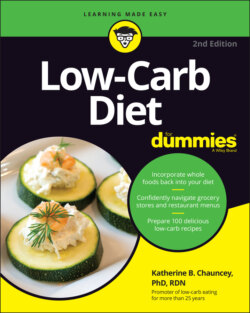Читать книгу Low-Carb Diet For Dummies - Katherine B. Chauncey - Страница 43
Eating fewer whole grains
ОглавлениеIndividual use of flour and cereal products was 174 pounds per person in 2019 up from 138 pounds in 1970, but down from the 200 pounds per person in 2000. Some experts feel this may be the result of the avoidance of grains due to certain health conditions such as gluten sensitivity or the popularity of certain diets such as the Paleo Diet. The fact is that modern grains aren’t the same as they used to be. Most of this change was in the form of refined flour food products.
Refined flour products can quickly spike your blood sugar and overstimulate your insulin production. Whole-grain food products raise blood-sugar levels gradually without overstimulating insulin. This effect is important in controlling obesity, diabetes, and heart disease. However, the USDA indicates consumption of whole grains is below guidelines. Evidence indicates that eating whole grains can reduce the risk of heart disease and some cancers. Current nutrition guidelines carry a strong recommendation to include at least three to five servings of whole-grain food products per day. However, that recommendation isn’t being met in the United States.
